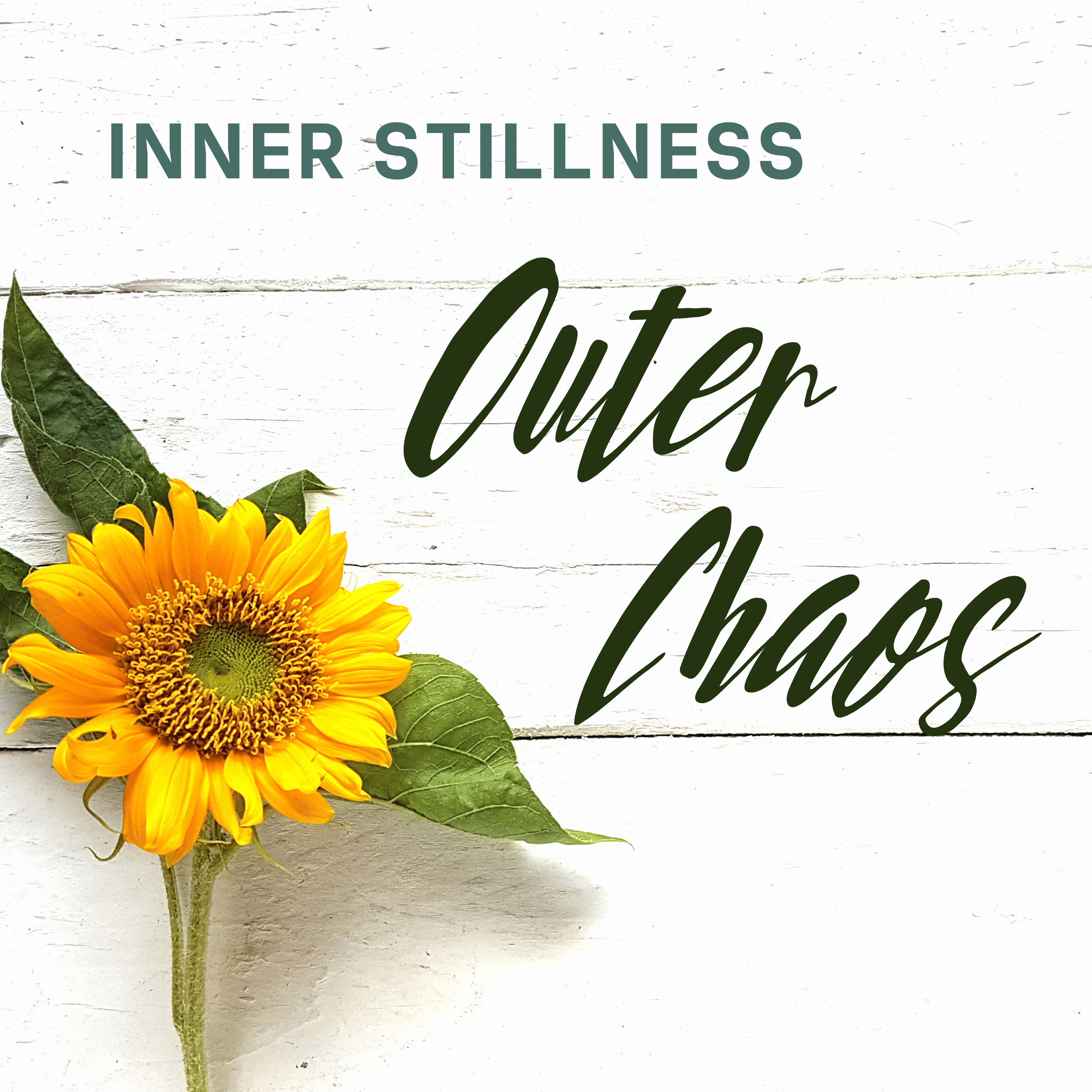

The Art of Setting Effective Boundaries
Inner Stillness Outer Chaos
| Avery Thatcher | Rating 0 (0) (0) |
| becomingavery.com | Launched: Apr 04, 2024 |
| podcast@becomingavery.com | Season: 2 Episode: 11 |
Picture this: you muster up the courage to set a boundary, but instead of the smooth sailing you hoped for, it's like hitting a brick wall. The other person reacts with confusion, frustration, or even hostility. What went wrong?
The belief that we can’t change what someone feels in response to our boundary, well this can really mess up our relationships and our own well-being. It sets us up to feel defeated and helpless, like we're constantly walking on eggshells, afraid to assert ourselves for fear of rocking the boat especially for us highly sensitive humans with a tendency to people please. It can lead to resentment, which leaves us feeling disconnected and misunderstood.
I’m not saying we shouldn’t set boundaries - boundaries themselves are incredibly helpful and necessary if we want to create more calm in our life.
But how we set the boundary is almost as important as the boundary itself.
SUBSCRIBE
Episode Chapters
Picture this: you muster up the courage to set a boundary, but instead of the smooth sailing you hoped for, it's like hitting a brick wall. The other person reacts with confusion, frustration, or even hostility. What went wrong?
The belief that we can’t change what someone feels in response to our boundary, well this can really mess up our relationships and our own well-being. It sets us up to feel defeated and helpless, like we're constantly walking on eggshells, afraid to assert ourselves for fear of rocking the boat especially for us highly sensitive humans with a tendency to people please. It can lead to resentment, which leaves us feeling disconnected and misunderstood.
I’m not saying we shouldn’t set boundaries - boundaries themselves are incredibly helpful and necessary if we want to create more calm in our life.
But how we set the boundary is almost as important as the boundary itself.
Picture this: you muster up the courage to set a boundary, but instead of the smooth sailing you hoped for, it's like hitting a brick wall. The other person reacts with confusion, frustration, or even hostility. What went wrong?
The belief that we can’t change what someone feels in response to our boundary, well this can really mess up our relationships and our own well-being. It sets us up to feel defeated and helpless, like we're constantly walking on eggshells, afraid to assert ourselves for fear of rocking the boat especially for us highly sensitive humans with a tendency to people please. It can lead to resentment, which leaves us feeling disconnected and misunderstood.
I’m not saying we shouldn’t set boundaries - boundaries themselves are incredibly helpful and necessary if we want to create more calm in our life.
But how we set the boundary is almost as important as the boundary itself.
The Problematic Narrative
For years social media has been telling us that we can't control how others react to our boundaries.
But here's the thing: while we might not have complete control over someone else's response, we're not powerless either.
Boundaries aren't just about us. They're about navigating the balance in relationships, where our needs intersect with the needs of others.
When we set boundaries without considering the other person's emotional triggers, mindset, and needs, it can backfire in a big way. Instead of fostering understanding and mutual respect, it can lead to resentment, conflict, and even deeper wounds in our relationships.
But here's the silver lining – by taking the time to consider the other person's perspective from a place of ahimsa and compassion, we can set boundaries in a way that honors both our needs and theirs. It's about approaching boundary-setting with empathy, creating space for open dialogue and mutual growth.
We’re not abandoning our needs. We’re just taking into consideration how to best communicate our needs.
What if we could shift our perspective and recognize that while we can't control others, we can influence how they respond to our boundaries?
Again, it's all about approaching boundary-setting with empathy, finding that balance between asserting ourselves and fostering understanding, even when it's tough.
And that's where the real magic happens – in the space between, where we find ahimsa, compassion and mutual respect.
What is Ahimsa and What Does it Have to Do With This?
Ahimsa, at its core, is about practicing non-violence and compassion towards ourselves and others. It's about recognizing the inherent worth and dignity of every being, and acting in a way that honors and respects that.
When we bring ahimsa into boundary-setting, we're not just drawing lines in the sand – we're creating space for understanding, growth, and mutual respect. We're approaching our relationships with empathy and compassion, recognizing that everyone has their own struggles, fears, and insecurities.
By embracing ahimsa in our boundary-setting practices, we create a world where everyone's needs are honored, everyone's voice is heard, and everyone's heart is held. It's about building bridges, not walls, and creating deeper connections with those we care about.
Moving Beyond 'My Way or the Highway'"
Let's start by talking about why the typical approach to boundaries – you know, the one that's all about telling people what you need and then washing your hands of the outcome – might not be serving us as well as we think.
Sure, it sounds empowering at first glance. You're standing up for yourself, setting your boundaries loud and clear, and hey, it's not your problem how the other person reacts, right? Well, not exactly.
Here's the thing – relationships are a two-way street. When we approach boundaries with a "my way or the highway" attitude, it can leave the other person feeling unheard, invalidated, and even resentful. And let's be real – that's not exactly a recipe for mutual respect and understanding.
So what happens next? The conversation ends, heavy with unspoken tension and unresolved issues. And while you might have gotten your point across, at what cost? Relationships are built on trust, communication, and yes, a healthy dose of compromise. By shutting down the conversation before it even begins, we're missing out on the opportunity to truly connect with the people we care about.
Plus, boundaries that are set in this way are often not respected because the other person doesn’t feel heard and will keep coming back until their perspective or needs are validated.
Why Empathetic Boundaries are More Effective
First off, let's talk about anticipating triggers. When we take the time to consider what might set someone off, we're better equipped to set boundaries in a way that respects their emotional needs. It's like having a roadmap that guides us through potential pitfalls and helps us navigate with care and sensitivity. Taking this step allows everyone’s nervous system to stay calm and not activated, which means that no one is in fight or flight and everyone can be heard.
By recognizing that the boundaries that we need to set might be challenging for someone else to accept, we create space for empathy and dialogue. It's about saying, "Hey, I see where you're coming from, I know this is going to be difficult for you and I'm here to listen."
And here's the kicker – fostering receptivity and understanding in others through boundary-setting is actually so much easier to do! Whether it's through clear communication, active listening, or simply approaching the conversation with an open heart and maybe a disclaimer, boundaries can be so much more enjoyable because you know that the person you’re setting it with understands where you’re coming from and what you need..
Moving Forward
Setting boundaries isn't just about drawing lines in the sand – it's about creating space for understanding, growth, and mutual respect. It's about recognizing that we're all navigating this messy, beautiful thing called life together, and that our relationships are richer and more fulfilling when we approach them with empathy and compassion.
By embracing the principles of ahimsa and empathy, we can set boundaries that honor both our own needs and the needs of others. We can navigate the delicate dance of relationships with grace and understanding, creating a world where boundaries aren't barriers, but bridges to deeper connection.
So let's lean into the discomfort, let's embrace the messiness, and let's commit to setting boundaries with love and compassion, both for ourselves and for those around us. Because when we do, we create a world where everyone's needs are honored, everyone's voice is heard, and everyone's heart is held. And isn't that the kind of world we all want to live in?
